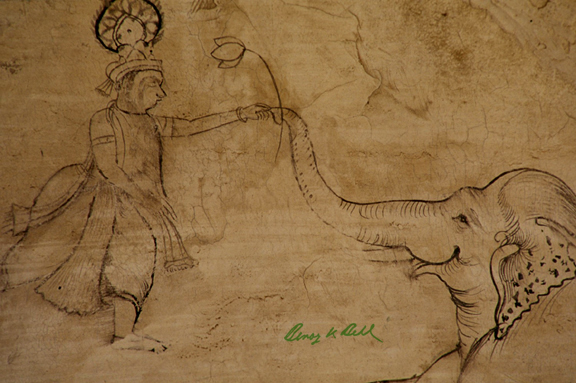Philosophy of the oneness of all beings

Photo Credit: Benoy K Behl
Benoy K Behl
For long, Indian artists have been famous for human depiction of animals. This is for the simple reason that these artists do not see any difference between humans and animals. Enjoy this exquisite drawing from the wall of the Amber Palace, just outside Jaipur, photographed in 2001. The Bhojanshala of the Amber Palace has the finest surviving art of Rajasthan. The smile on the face of the elephant and the twinkle in his eye are remarkable!
The world is passing through difficult times. However, we have the choice to utilise it to look at ourselves, rethink about our lives, take care of all that is around us and to reshape a better future for this planet. We will have achieved something positive and learnt something very important even in the midst of our crisis. We are very fortunate to have a heritage of a great philosophy, which has always taught us universal love and the interconnection of all creation, including us, animals, the trees and rivers. Early Upanishads, penned in the 8th-9th centuries BCE, presented this marvellous vision of the interconnectedness of all that there is around us. In any case, cruelty to animals is wholly unnecessary and the world could take a leaf out of the Upanishads to shape a vision for a better tomorrow.

Another not-to-be-missed photograph is of this composite creature at the Sanchi Stupa, c. 100 BCE. The depiction displays the oneness of all life forms. It is such a delightful and happy creature — with the qualities of an elephant, cow, deer and even a horse. All of creation is seen in a vision full of warmth. In today’s time, the message from Indian art and philosophy is of the oneness of all beings — human, animal, birds… It is time to stop being cruel to bats, chicken, all animals, trees… Nature.


